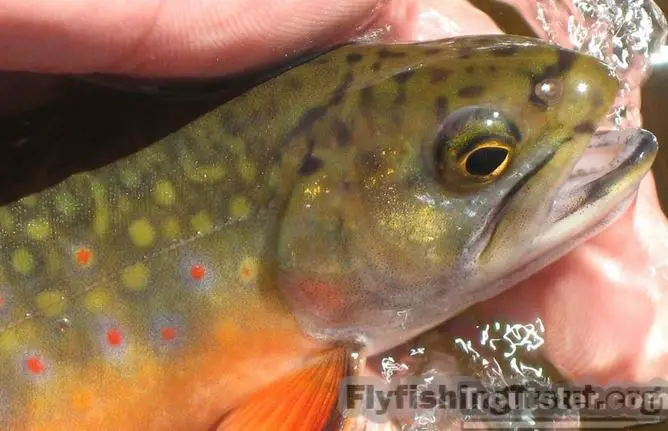This post was last updated on August 18th, 2021 at 08:21 am
This bright and colorful thriving trout species can be found from coast to coast in the United States. Although it is known as a trout, S. fontinalis is actually a member of the char family. It requires the coldest and cleanest water to survive. Any type of pollution or sudden change in habitat will be evident by observing these trout. This species is also very sensitive to oxygen levels, as it requires high amounts of it to flourish.
(Salvelinus fontinalis) Commonly known as the brook trout, eastern brook trout, brookies and speckled trout.
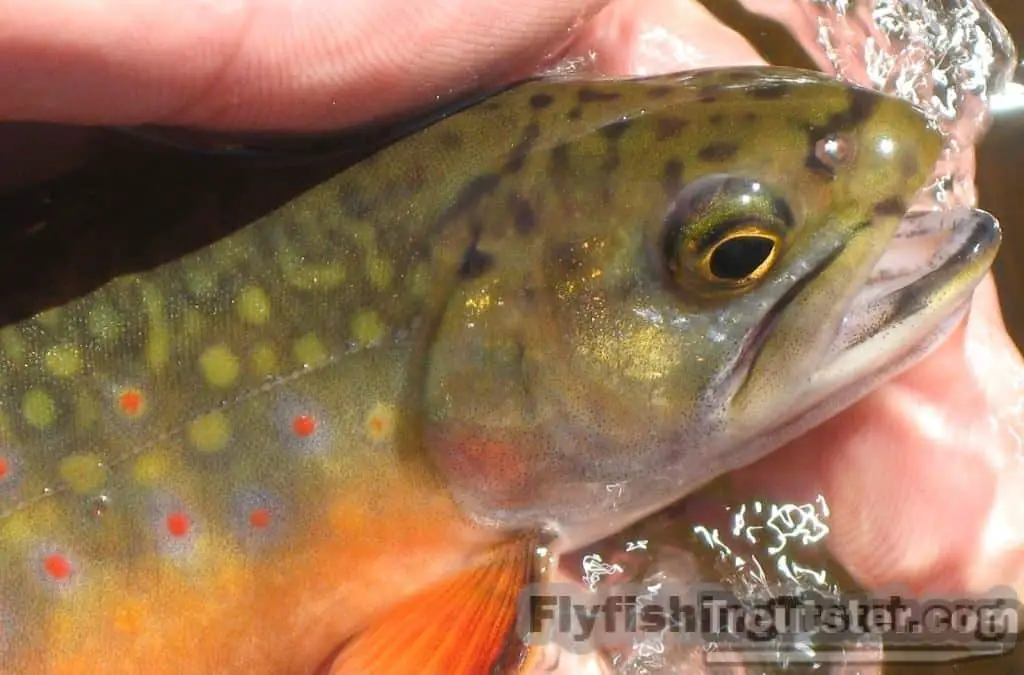
Where do Brook Trout live?
Brook trout are found in a few different types of aquatic environments: rivers, lakes, and coastal marine areas. Their living requirements are fairly specific. The freshwater populations usually occur in cold, well-oxygenated streams and lakes. Adult brook trout will do quite well in temperatures that remain below 65 degrees F., while hatchlings will suffer high mortality rates in waters with sustained temperatures of 20°C or 68 degrees Fahrenheit. Water temperatures typically range from 34 to 72°F (1 to 22 °C).
This species prefers to not live in silty or stagnated areas. These char have several requirements to live in a small stream and creek including: fairly fast running water, areas to rest in eddies and pools, feeding areas in riffles and proper areas to seek shelter. Areas where the brook trout would normally hide include, undercut banks, below logs, deep pools and various types of woody debris. Wild brook trout populations in the rocky mountains stream habitats will usually have permanent cold water spring sources or prolonged runoff from high elevation snow melt.
Get To Know the Brook Trout
This species, as mentioned earlier is more formally known as the Salvelinus fontinalis. This species belongs to the order Salmoniformes, which classifies the family of fish we commonly refer to as salmon. “Fontinalis” actually descends from the Latin phrase “of or from a spring or fountain”. Although the fish are very common, they hold the title of the ‘state fish’ for the USA states Michigan, New Hampshire, New Jersey, New York, Pennsylvania, Vermont, Virginia and West Virginia.
Looking upon this stunning fish, you would see a color of green ranging to brown or even grey. The pattern of the skin is typically marble-like. The flanks generally contain red dots circled by blue halo’s. Towards the bottom of the fish, or the belly, there will be red or orange colors (even in the fins) especially in the male adult trout.
Brook Trout Size
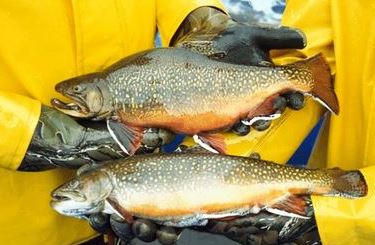
More on sizing, the average fish will measure anywhere from 5 inches to 20+ inches. A very large brook trout would be around 5 to 14 pounds. Most fish of this species weigh less than one pound. There are brookies that live in Lake Superior that will grow to quite large sizes. These are known as coasters and they come back into the rivers to spawn in the fall.
Brookies found in high mountain small streams tend to be much smaller than fish that live in larger rivers and lakes. Most of the very large members of this species will be caught in lakes and beaver ponds of flooded creeks.
World Record Brook Trout
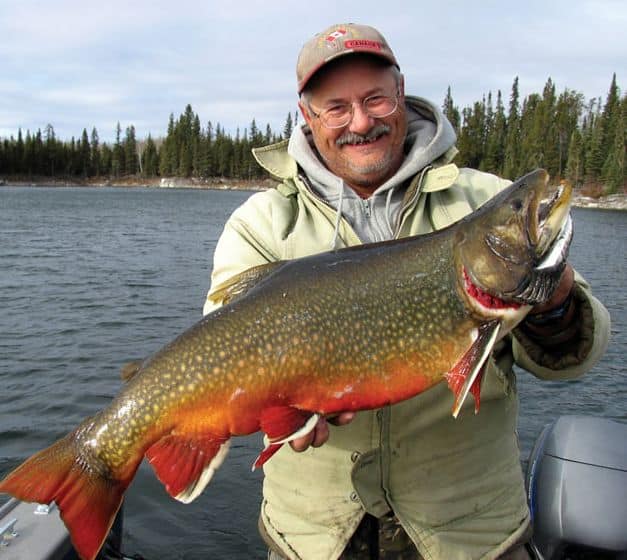
The current world record for this species is 14 pounds 8 oz. caught in Ontario Canada. You can read more about the world record and many State record brook trout here.
Brook Trout Habitat
Where can you find these beauties, you ask? They are found commonly in small streams, creeks, lakes, and spring ponds. Throughout North America, these trout are fairly common. The preferred location has been known to be clean and cold well-oxygenated streams. Because of the more common location preference of these fish, they are highly popular for fisherman- experts and beginners alike.
What do Brook Trout eat?
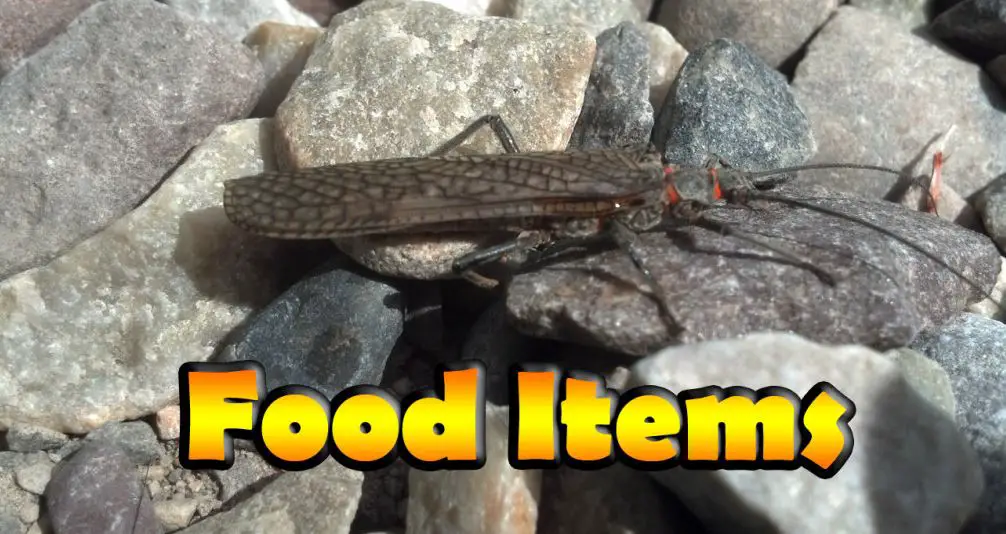 Just like most types of trout, the Eastern brook trout is an opportunistic feeder, they will normally eat whatever is edible and easily available. The list of food items that these fish will eat is quite large, so we will go over the main items that this species of trout use as staples.
Just like most types of trout, the Eastern brook trout is an opportunistic feeder, they will normally eat whatever is edible and easily available. The list of food items that these fish will eat is quite large, so we will go over the main items that this species of trout use as staples.
Mayflies
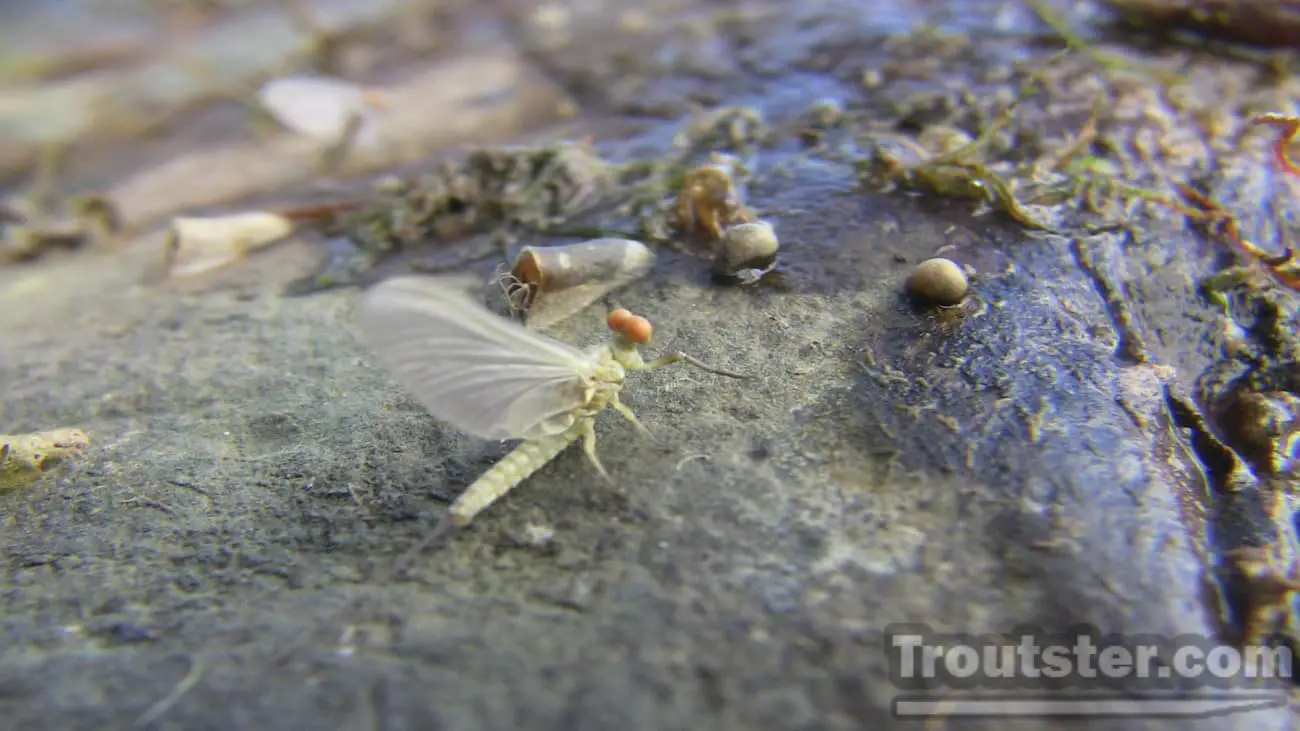
Mayflies are a very common aquatic insect that can be found in nearly every body of water brookies inhabit.
During every stage of the mayflies life they are considered to be a significant source of food for the brook trout. Since almost no insects will be present on the surface of the water during the cold winter months, the trout rely on nymphs as a primary source of food. It is said that brook trout eat more than 90% of their food under the surface of the water. When the mayfly is hatching or breeding, they are particularly susceptible to predation by these trout. During a hatch, brook trout will be actively feeding on the surface of the water eating every fly possibly in a frenzy. This is important to the fly angler, because these fish will be fairly easy to catch.
Stone Flies
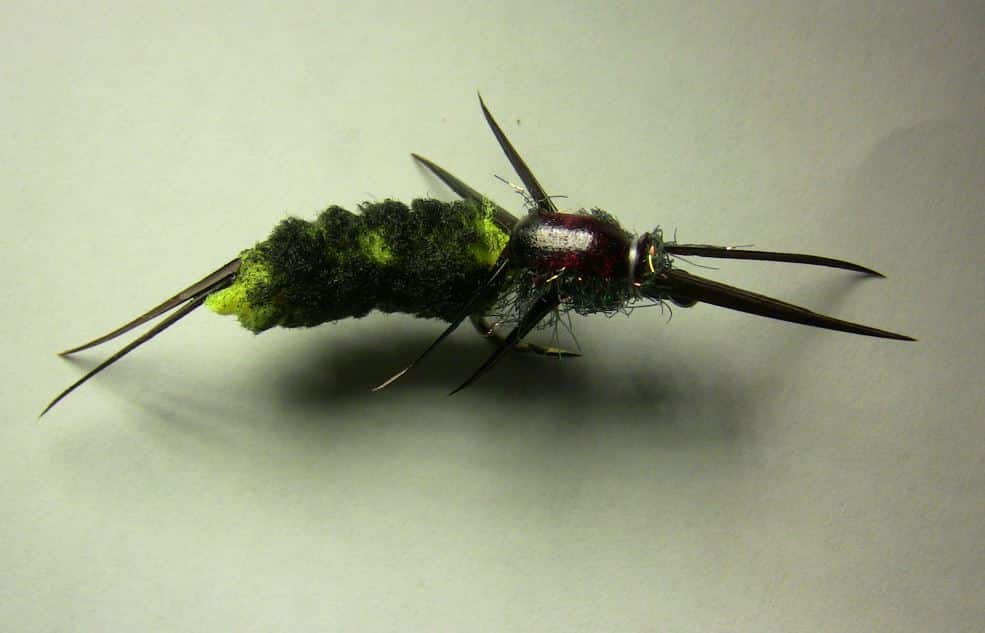
The stonefly is a species of aquatic insect with a life cycle the same as mayflies. Just like the mayfly these flies come in a variety of colors and sizes. They are indeed a valuable food source for the brook trout. The main difference in appearance between a mayfly and stonefly is the shape of the wings. Mayflies have their wings upright, while stonefly wings go strait backwards along the body.
Terrestrials
These are insects that don’t belong in the water, but end up becoming trout food by falling into the river. Some terrestrial insects include:
- Grasshoppers
- Ants
- Beetles
- Cicadas
It has been said that the ant is one of the brook trout’s favorite foods. They also seem to enjoy grasshoppers and beetles. These insects will often fall into the river as they are attempting to get water, or get blown in by the wind. Trout consider them a special treat, making them an important food item during the summer months.
The Caddisfly
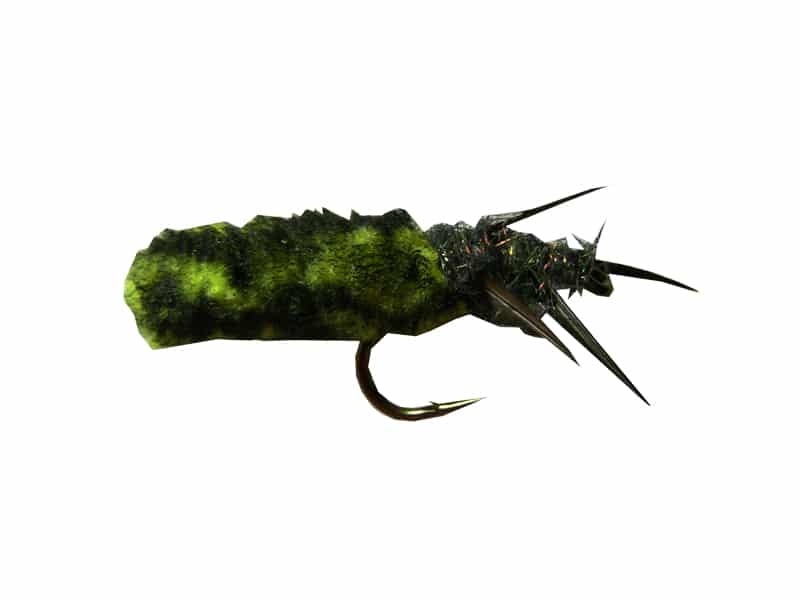
The caddis fly is another aquatic insect that is a common food for brook trout. These can be found nationwide in most bodies of water inhabited by brookies. These insects have tent shaped wings and are easily discernible from mayflies and stoneflies. The caddis undergoes a pupa stage that the previously mentioned flies do not. The caddis is plentiful in most trout streams and are a staple food for the brook trout.
More Brook Trout Food Items Include:
As mentioned previously, these trout will eat whatever is nearby and available. They are usually only limited by what will fit into their mouths. Some other common foods include:
- Crawdads
- Frogs
- Small trout and chubs
- Scuds (freshwater shrimp)
Fishing for Brook Trout
Brook trout are not known for being terribly picky eaters, as a matter of fact they can be quite reckless in their eating habits. During the summer months they can be easily caught on various dry flies, with the Adams fly patterns being my personal favorite. These spunky trout will often feed on mediocre drifts that any other trout species would likely deny, but don’t underestimate them! Just like any other trout species, brookies become wary and wise with age and can become difficult to trick.
Perhaps the most appealing thing about fishing for this species is their knack for living in remote areas. They can often be found high in small mountain streams where few people venture to catch them. It is in this type of scenario where these fish are often easy to trick.
Fly fishing for brook trout is perhaps one of the most rewarding ways to catch them. Fooling large brook trout with flies can often be a challenge, but it is extremely fun.
How to Catch Brook Trout
Common methods of catching S. fontinalis include worm fishing, lures, and of course fly fishing.
Leaf worms or nightcrawlers are a good bait, but will often cause damage to the fish. The best way to catch these fish is with flies or artificial lures for their sake.
Common Lures Include
- Spinners
- Spoons
- Small crankbaits (Rapalas etc.)
The Best Flies For Brook Trout
- Bushy dry flies tend to work well for uneducated fish: Stimulators, Bi-visible patterns and elk hair caddis are good choices.
- Small streamers such as muddler minnows and royal coachman streamers are a great choice when there is no insect activity.
- Various nymphs like the hairs ear and pheasant tail will usually work well also.
Don’t forget to match the hatch! These fish are just like all trout and will target anything that resembles natural forage at the time. If there are caddis in the air, you should try that pattern first. Your best success will come with matching the flies you see in the area.
Brook Trout Spawning Habits and Life Cycle
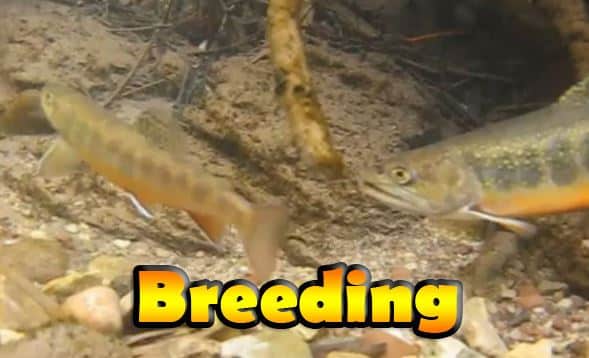
Now that you have a better understanding of what the brook trout are all about, it is time to look a little deeper in to the life cycle and spawning habits of this creature. Understanding the spawning habits is important when breeding, planning to catch, and simply being informed of the process for general knowledge. To start out, let’s get a general definition going for spawning.
When Do Brook Trout Spawn?
Brook trout spawn in the fall usually in the lower end of riffles and pools. They require clean gravel and high levels of oxygen in a breeding area. They will not nest in areas with sediment and rarely in non moving water. It is very common for these trout to live in lakes and ponds, but they will usually move into a river or stream to spawn in the fall. However these fish are highly successful at spawning in both lakes and rivers. Most trout species will only spawn or breed in rivers, but the brookie will commonly use specific areas in lakes. It seeks out areas where ground water or springs seeps upwards into the lake. This will supply the fish and eggs with proper oxygen levels and a consistent current to keep them clean.
Check out this video about Brook Trout spawning
In the video above, you can witness breeding activity of brook trout in a small stream. I placed my camera underwater near their “redd” and was able to capture some brook trout spawning behavior.
The Brook Trout Spawning Season
Late summer to late Autumn is the general season frame in which these fish will spawn. Variations of this time frame can range by fish, location, or the temperature of the water. The spawning peak has been said to be mid-October. The most craved area for this species to spawn is known to be a well-oxygenated and clean river bottom with loose gravel.
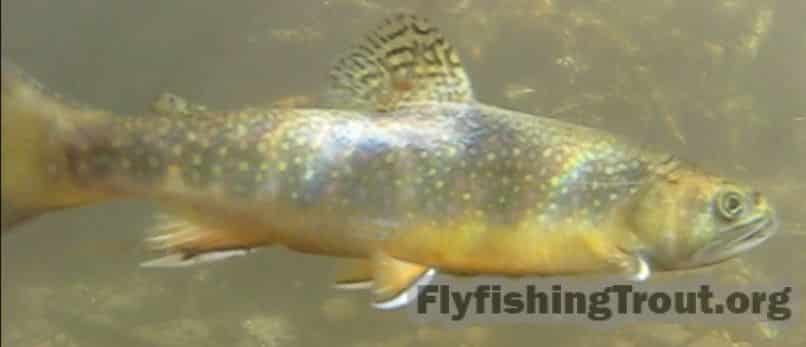
The selection of the breeding ground really depends on how sanitary the gravel is and how oxygenated the water is. Females will not choose grounds that are dirty or poorly oxygenated.
- Female Job: The female must select her location for nesting. This is called her “redd” which is ultimately the nest she builds in the gravel or location that she finds suitable for her eggs to be dropped. The female will swim in a different fashion on her side using the tail fins to move and clean gravel along the way creating her redd. Once this is completed, she will release her egg which may range from 100 to 5000.
- Male Job: As the female is creating her redd, the males begin to notice and crowd around her waiting for the opportunity to allow their sperm to fertilize the eggs.. If you have ever heard the Darwinian principle of “Survival of the Fittest”, this is a most clear example of the principle.
Finalization: Once the successful male earns the right to release his sperm and fertilize the lady’s eggs, the female will cover the depository with gravel for protection. Hopefully the eggs will survive throughout the winter months. This is the catch to all fall spawning. Many believe that the fall spawning practice of the brook trout simply comes from the evolutionary aspect of where brook trout originally came from, which makes it seem more logical to spawn in the fall than it does now. The brown trout also spawns in the fall and has been known to occasionally breed with the brook trout. When this phenomenon occurs successfully the hybrid tiger trout is created.
Spring: When spring rolls around, the eggs hatch and release the fry. It takes approximately 100 days to hatch from the day of fertilization. They will remain around the redd until the yolk sac is expended and then they will retreat to an area of shallow water. Aquatic plants provide much protection in the shallow water for the new brook trout hatching fry until they can mature.
Brook Trout Spawning Overview:
- Typically female spawning brook trout will opt to breed with the largest and most healthy males.
- A female will often lay between 100-5000 eggs dependent upon her size. Larger and older females will carry many more eggs than a one or two year old spawning female.
- Once the desired mate has been chosen by the female she will allow the colorful male the opportunity to spray the eggs with his sperm.
- After the fertilization is complete the eggs will be covered with gravel by the trout for protection from invaders.
- The male and female will often remain by the nest to offer more protection until the eggs have hatched in approximately 50 days.
Survival of the Fittest: Charles Darwin founded the principle that the animals which display the most “fit” characteristics will ultimately survive and therefore reproduce. Whether “fit” characteristics refer to being smart, strong, fast, sneaky, camouflaged, or another advantageous trait, those that display whatever is necessary will in the end be the ones to exemplify overall success including procreation. The brook trout is a perfect example of a successful species. They might require very specific conditions to survive, but once they are in them, they will thrive.
Other Brook Trout Related Pages
- Learn the Differences of the Brown vs Brook trout
- Brook Trout Fly Fishing Tips
- Map of the Brook Trout Native and Non Native Range
- Brook and Lake Trout Hybrid = The Splake
Brook Trout FAQ
Do Brook Trout have scales?
Brook trout only have small scales, so they don’t always need to be scaled before cooking. You might find it necessary to scrape the fish’s skin with a descaler or the dull side of a knife if you catch a larger trout, probably over 14 inches or so.
Are brook trout good to eat?
Brook trout are a good eating fish. They’re also pretty easy to cook! They’re great on the grill or pan fried with some butter, parsley and salt and pepper to taste.

